ATI RN Fundamentals 2019 with NGN - Exam 2
Total Questions : 65
Showing 25 questions, Sign in for moreA nurse is assessing the visual acuity of a client who wears glasses using a Snellen chart. Which of the following actions should the nurse take?
Explanation
The nurse should begin by testing the client while they are wearing glasses because this is how the client normally sees.
a. The client should be positioned 6.1 m (20 feet) away from the chart, not 3.3 m (10 feet).
b. The nurse should document the smallest line the client can read on the chart, not the largest line.
c. The nurse should instruct the client to begin the assessment with one eye covered, not both eyes open.
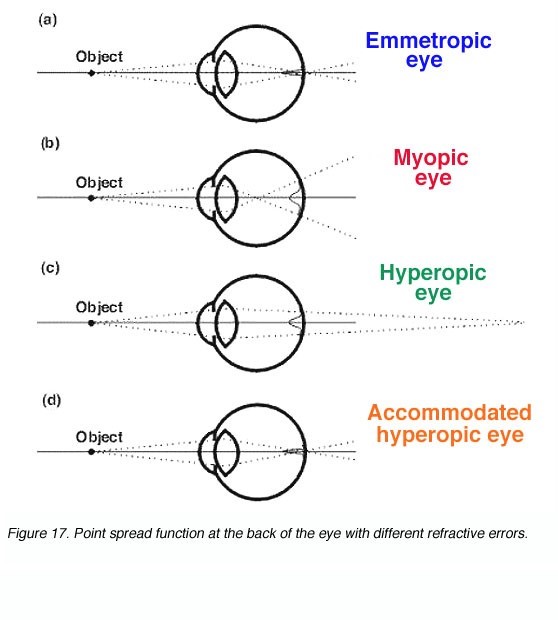
A nurse is assessing a client who is receiving continuous IV fluids through a peripheral IV. Which of the following findings indicates to the nurse that the client is experiencing fluid overload?
Explanation
Crackles in the lungs indicate that the client is experiencing fluid overload. When there is an excess of fluid in the body, it can accumulate in the lungs and cause crackles. The other
a. Fever is not a sign of fluid overload.
c. Bradycardia (a slow heart rate) is not a sign of fluid overload.
d. Flattened neck veins are not a sign of fluid overload; distended neck veins may be a sign of fluid overload.

A nurse is preparing to administer several medications to a client. Which of the following data should the nurse plan to use to confirm the client's identity?
Explanation
The nurse should plan to use the client's telephone number to confirm their identity. This is because the telephone number is a unique identifier that is directly associated with the client and can be easily verified. By comparing the client's telephone number with the information on the medication administration record or electronic health record, the nurse can ensure that the right medication is given to the right patient.
Explanation:
a) The client's room number is not a reliable method to confirm the client's identity because multiple clients may be assigned to the same room, and there is a possibility of room changes or transfers.
b) The client's admitting diagnosis is not a suitable method to confirm identity as it does not provide specific information about the individual patient.
c) The name of the client's next of kin is not a reliable method to confirm the client's identity as it refers to a family member or emergency contact, not the client themselves. Additionally, next of kin information may not always be up to date or readily available.
A nurse is planning to provide discharge instructions to a client who does not speak the same language as the nurse. Which of the following actions should the nurse take?
Explanation
The nurse should arrange for a video conference with an interpreter who speaks the client's language to provide discharge instructions. This ensures that the client receives accurate and complete information in a language they understand. The other
a. Assistive personnel may not be trained or qualified to provide medical interpretation.
b. Family members may not have the necessary medical knowledge to accurately translate medical information.
d. Simply indicating printed instructions in the client's language may not be sufficient to ensure the client understands the information.
A nurse is planning to provide discharge instructions to a client who does not speak the same language as the nurse. Which of the following actions should the nurse take?
Explanation
The nurse should arrange for a video conference with an interpreter who speaks the client's language to provide discharge instructions. This ensures that the client receives accurate and complete information in a language they understand. The other
a. Assistive personnel may not be trained or qualified to provide medical interpretation.
b. Family members may not have the necessary medical knowledge to accurately translate medical information.
d. Simply indicating printed instructions in the client's language may not be sufficient to ensure the client understands the information.
A nurse is planning care for a client who is scheduled for an intravenous pyelogram. Which of the following actions is appropriate for the nurse to include?
Explanation
The nurse should assist the client with a bowel cleansing before an intravenous pyelogram. This helps to ensure that the bowel is empty and that the images obtained during the procedure are clear. The other
a. Oral contrast is not typically used for an intravenous pyelogram.
b. Pain in the suprapubic region is not a common side effect of an intravenous pyelogram.
d. Removing metal objects is important for procedures that use magnetic resonance imaging (MRI), but it is not necessary for an intravenous pyelogram.
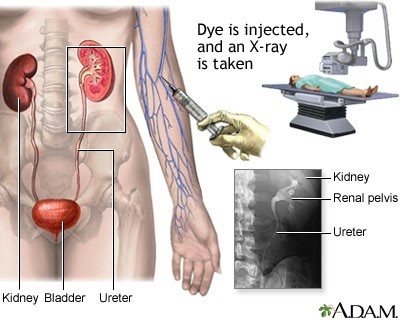
A nurse is providing teaching to a client about the administration of clotrimazole vaginal suppositories.
Which of the following statements by the client indicates an understanding of the teaching?
Explanation
The client's statement that they will place the suppository as far inside their vagina as they can reach indicates an understanding of the teaching. This ensures that the medication is delivered to the site of infection.
a. The client should continue to use the medication for the full course of treatment, even if their symptoms improve before the treatment is complete.
b. The client can lie on their back or side to insert the suppository; there is no specific requirement to lie on their left side.
c. Lubricant is not typically necessary for the insertion of a vaginal suppository.

A nurse is preparing to administer a controlled substance to a client for pain management. Which of the following actions should the nurse take?
Explanation
The nurse should ask a second nurse to record her signature when wasting any unused portion of the controlled substance. This is a standard procedure for the safe handling and documentation of controlled substances.
a. The nurse should report any discrepancy in the count total of the controlled substance before administration, not after.
b. The wasted portion of the controlled substance should be disposed of according to facility policy, which may not involve placing it in a sharps container.
c. The count total of the controlled substance should be verified before removing the amount needed, not after.
A nurse is caring for a group of clients whose primary languages are different from the nurse's. For which of the following clients should the nurse provide written materials in the client's primary language?
Explanation
The nurse should provide written materials in the client's primary language for a client who requires teaching prior to discharge. This ensures that the client has access to important information in a language they understand and can refer to after leaving the facility.
b. A client who is watching a video about meal services in their primary language may not require additional written materials.
c. A client who is learning to use an incentive spirometer with the help of an interpreter may not require additional written materials.
d. The administration of a prescribed pain medication does not necessarily require the provision of written materials.
A nurse is planning care for a client who has a new prescription for parenteral nutrition (PN) in 20% dextrose and fat emulsions. Which of the following is an appropriate action to include in the plan of care?
Explanation
Parenteral nutrition (PN) with high concentrations of dextrose, such as 20%, requires a central venous line for administration to prevent damage to peripheral veins. Therefore, preparing the client for a central venous line is an appropriate action to include in the plan of care.
a. The PN infusion bag should be changed every 24 hours to reduce the risk of infection.
d. Blood glucose levels should be monitored regularly, but not necessarily daily, as PN can affect blood glucose levels.
c. PN and fat emulsions can be administered together in a single infusion.

A nurse is providing teaching about preventing back strain to the caregiver of a client who is immobile and requires assistance to reposition in bed. Which of the following statements by the caregiver indicates an understanding of the teaching?
Explanation
Tightening the abdominal muscles prior to moving helps to stabilize the spine and prevent back strain. This is an important technique for caregivers to use when assisting a client who is immobile and requires repositioning in bed.
a. Twisting at the waist while pulling the draw sheet can cause strain on the back muscles and should be avoided.
b. Keeping the legs straight does not provide more power in the lift and can also cause strain on the back muscles.
d. Placing the bed in the lowest position does not necessarily prevent back strain and is not related to the proper technique for repositioning a client in bed.
A nurse in an emergency department is assessing a client who reports right lower quadrant pain, nausea, and vomiting for the past 48 hours. Which of the following actions should the nurse take first?
Explanation
The nurse should first palpate the abdomen to assess for tenderness and rigidity, which can provide important information about the client's condition. Right lower quadrant pain can be a sign of appendicitis, and abdominal palpation is an important part of the assessment for this condition.
- Administering an antiemetic may help relieve the client's nausea and vomiting, but it is not the first action the nurse should take.
- Offering pain medication may help relieve the client's pain, but it is not the first action the nurse should take.
- Auscultating bowel sounds can provide information about the client's gastrointestinal function, but it is not the first action the nurse should take.
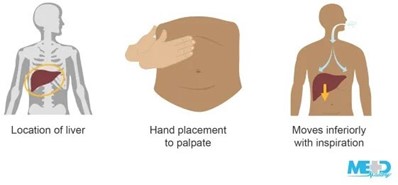
A nurse at a long-term care facility is providing change-of-shift report to an oncoming nurse about a client who has shingles. Which of the following information should the nurse include in the report?
Explanation
When providing change-of-shift report about a client who has shingles, the nurse should include information about the type of transmission-based precautions in place to prevent the spread of infection to other clients and staff. Shingles is caused by the varicella-zoster virus and can be spread through direct contact with the rash.
- The times for routine vital sign measurements may be important information to include in the report, but it is not specific to the client's condition of shingles.
- The client's background health history may be important information to include in the report, but it is not specific to the client's condition of shingles.
- The number of visitors the client had during the shift may be important information to include in the report, but it is not specific to the client's condition of shingles.
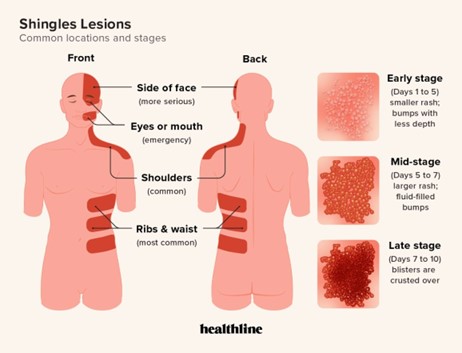
A nurse is planning care to prevent skin breakdown for a client who is immobile and has urinary incontinence. Which of the following actions should the nurse include in the plan of care?
Explanation
An alternating pressure mattress can help prevent skin breakdown in a client who is immobile by redistributing pressure and reducing the risk of pressure ulcers. This is an appropriate action for the nurse to include in the plan of care for a client who is immobile and has urinary incontinence.
a. An indwelling urinary catheter can increase the risk of infection and should only be used when other methods of managing urinary incontinence are not effective.
c. Cornstarch can absorb moisture and help keep the skin dry, but it is not recommended for use on broken skin or in areas where there is a risk of fungal infection.
d. Repositioning the client every 4 hours may not be frequent enough to prevent skin breakdown. The client should be repositioned at least every 2 hours to reduce the risk of pressure ulcers.
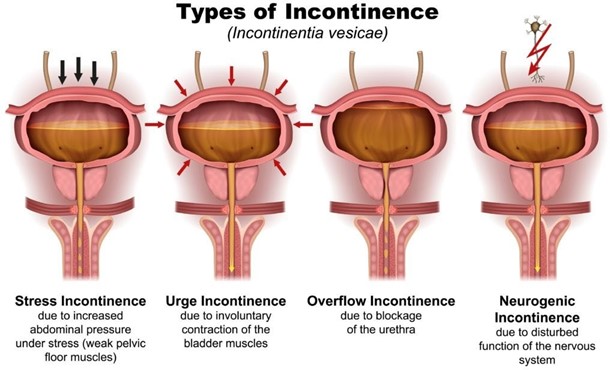
A nurse is assessing a client who is receiving a blood transfusion. The nurse notes lung crackles, hypoxia, and distended neck veins. Which of the following actions should the nurse take? (Select all that apply.)
Explanation
The nurse should stop the transfusion, place the client in high-Fowler's position, obtain a prescription for a diuretic, and administer oxygen to the client. These actions can help manage the symptoms of transfusion- associated circulatory overload (TACO), which can occur when a client receives too much fluid too quickly during a blood transfusion.
c. Administering epinephrine is not an appropriate action for managing TACO. Epinephrine is used to treat anaphylaxis, which is a different type of transfusion reaction.
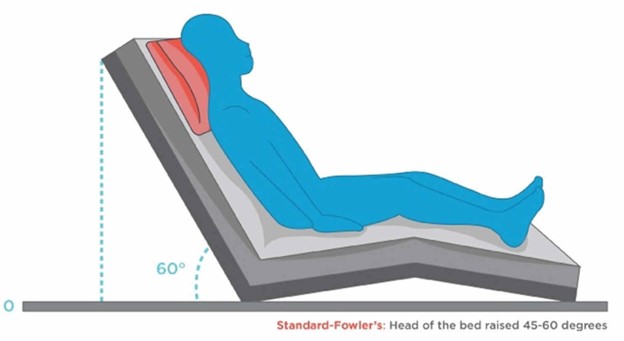
A nurse is caring for a client who has right-sided paralysis following a cerebrovascular accident. Which of the following prescriptions should the nurse anticipate to prevent a plantar flexion contracture of the affected extremity?
Explanation
An ankle-foot orthotic can help prevent a plantar flexion contracture of the affected extremity in a client who has right-sided paralysis following a cerebrovascular accident. This device can help maintain the foot and ankle in a neutral position and prevent the development of a contracture.
a. A sequential compression device is used to prevent deep vein thrombosis and is not specifically designed to prevent contractures.
b. An abduction splint is used to maintain the hip in a neutral position and is not specifically designed to prevent contractures of the foot and ankle.
d. A continuous passive motion machine is used to promote joint mobility and is not specifically designed to prevent contractures of the foot and ankle.
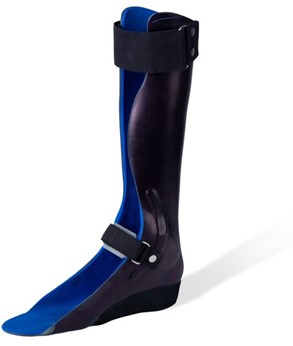
A nurse is caring for a client who is receiving enteral feedings via an NG tube. Which of the following actions should the nurse take prior to administering the formula?
Explanation
Before administering enteral feedings via an NG tube, the nurse should check for gastric residual volume to ensure that the client is able to tolerate the feeding. If the residual volume is high, it may indicate delayed gastric emptying and the feeding may need to be delayed or the rate adjusted.
a. Encouraging the client to take sips of water may help maintain hydration, but it is not necessary prior to administering enteral feedings.
c. Flushing the tube with sterile 0.9% sodium chloride irrigation can help maintain patency of the tube, but it is not necessary prior to administering enteral feedings.
d. Encouraging the client to breathe deeply and cough can help clear secretions from the lungs, but it is not necessary prior to administering enteral feedings.

A nurse is providing preoperative teaching to a client over the phone in preparation for outpatient surgery. Which of the following information should the nurse include in the teaching?
Explanation
When providing preoperative teaching to a client over the phone in preparation for outpatient surgery, the nurse should explain the need for the client to have another adult drive them home following surgery. This is because the client may still be affected by anesthesia and may not be able to safely operate a vehicle.
a. Asking the client to shower 3 times the day before surgery is not necessary and may dry out the skin.
c. The client should typically stop drinking clear liquids 2 hours before surgery, not 1 hour.
d. The client should not wear makeup during surgery as it can interfere with the monitoring of their skin color and oxygen saturation.
A nurse is caring for a client who reports a pain level of 5 on a scale from 0 to 10. The client informs the nurse that pain medications are not an
Option for managing pain. Which of the following is an appropriate response by the nurse?
Explanation
If a client reports pain and informs the nurse that pain medications are not an option for managing their pain, the nurse can offer non-pharmacological interventions such as a back massage to help relieve the client's pain. This is an appropriate response by the nurse.
a. Telling the client that the pain medication will work if they just give it a chance is not an appropriate response as it dismisses the client's concerns and preferences.
b. The nurse should not recommend that the client take any herbal remedies without first consulting with the healthcare provider.
d. Asking the client why they think pain medication is not going to help them may be appropriate in some situations, but it is not necessarily the best initial response. The nurse should first offer non- pharmacological interventions to help relieve the client's pain.
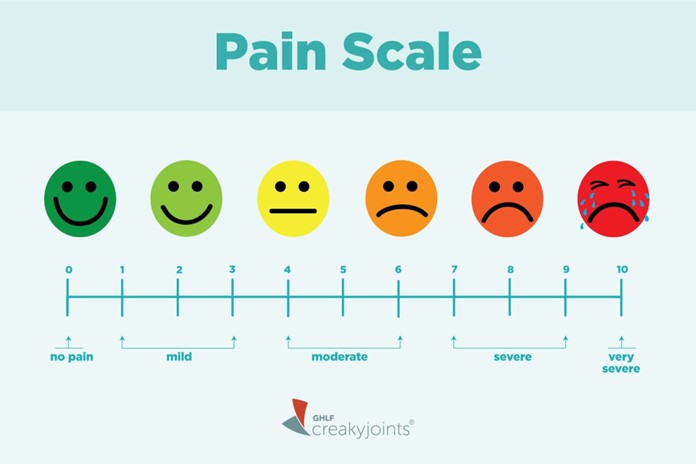
A nurse is caring for a client who is receiving enteral feedings via an NG tube. Which of the following actions should the nurse take prior to administering the formula?
Explanation
Before administering enteral feedings via an NG tube, the nurse should check for gastric residual volume to ensure that the client is able to tolerate the feeding. If the residual volume is high, it may indicate delayed gastric emptying and the feeding may need to be delayed or the rate adjusted.
a. Encouraging the client to take sips of water may help maintain hydration, but it is not necessary prior to administering enteral feedings.
c. Flushing the tube with sterile 0.9% sodium chloride irrigation can help maintain patency of the tube, but it is not necessary prior to administering enteral feedings.
d. Encouraging the client to breathe deeply and cough can help clear secretions from the lungs, but it is not necessary prior to administering enteral feedings.
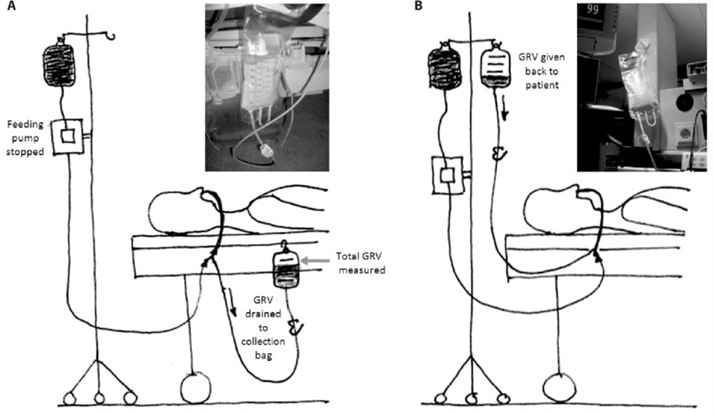
A nurse is caring for a client who has a tracheostomy. Which of the following actions should the nurse take?
Explanation
When caring for a client who has a tracheostomy, the nurse should secure the tracheostomy ties to allow one finger to fit snugly underneath. This helps ensure that the tracheostomy tube is secure and prevents accidental dislodgement.
b) A cotton tip applicator should not be used to clean inside the inner cannula as it can leave fibers behind
and increase the risk of infection.
c) The skin around the stoma should be cleansed with sterile saline, not normal saline, to reduce the risk of infection.
d) The outer cannula should not be soaked in warm, soapy tap water as this can introduce bacteria and increase the risk of infection.
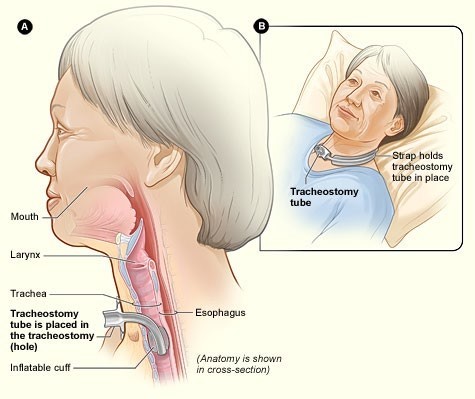
A nurse is speaking with the partner of a client who is unconscious and has a do-not-resuscitate (DNR) order in place. The partner requests that CPR be performed if necessary. Which of the following responses should the nurse make?
Explanation
If the partner of a client who is unconscious and has a DNR order in place requests that CPR be performed if necessary, the nurse should inform the partner that they should call the client's provider to change the DNR order. The provider is responsible for discussing the client's wishes and making any changes to the DNR order.
a) Discussing other areas of the client's care may be appropriate, but it does not address the partner's
request for CPR to be performed if necessary.
b) Sharing personal experiences may help build rapport with the partner, but it does not address their request for CPR to be performed if necessary.
c) Acknowledging the difficulty of accepting the client's wishes may be appropriate, but it does not address the partner's request for CPR to be performed if necessary.
A nurse is teaching a client how to self-administer daily low-dose heparin injections. Which of the following factors is most likely to increase the client's motivation to learn?
Explanation
The client's belief that their needs will be met through education is the most likely factor to increase their motivation to learn how to self-administer daily low-dose heparin injections. When a client believes that they will benefit from the education and that it will help them meet their needs, they are more likely to be motivated to learn.
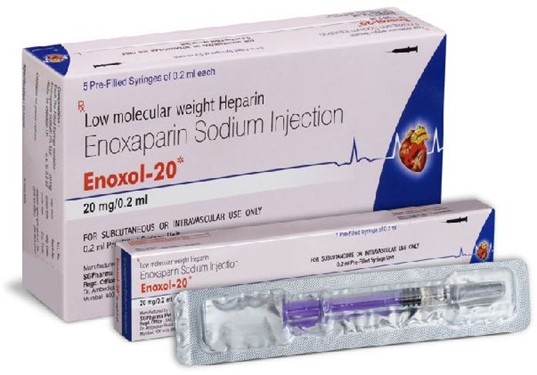
a. The nurse's empathy about the client having to self-inject may help build rapport with the client, but it is not the most important factor in increasing the client's motivation to learn.
c) The client seeking family approval by agreeing to a teaching plan may be a motivating factor for some clients, but it is not the most important factor in increasing the client's motivation to learn.
d) The nurse explaining the need for education to the client may help increase the client's understanding of the importance of learning how to self-administer heparin injections, but it is not the most important factor in increasing the client's motivation to learn.
A nurse is providing teaching about health promotion guidelines to a group of young adult male clients. Which of the following guidelines should the nurse include?
Explanation
When providing teaching about health promotion guidelines to a group of young adult male clients, the nurse should include the recommendation to have a dental examination every 6 months. Regular dental examinations can help prevent dental problems and maintain good oral health.
b) A testicular examination is recommended annually, not every 2 years.
c) A tetanus booster is recommended every 10 years, not every 5 years.
d) A herpes zoster immunization is recommended for adults age 60 and older, not age 50.
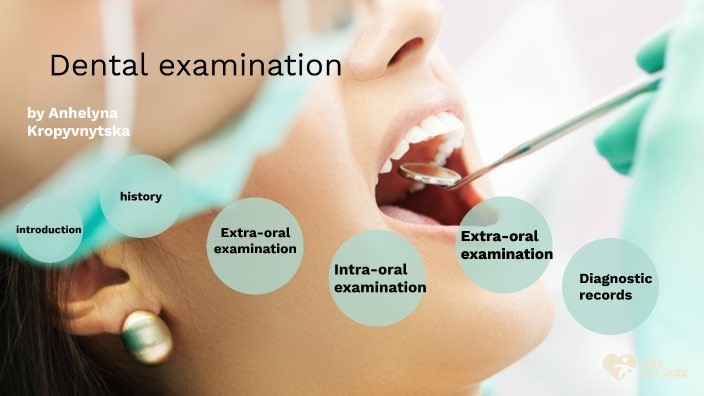
A nurse is caring for a client who consumes 3 ounces of milk, 2 ounces of orange juice, 3 ounces of tea, and 4 ounces of water over a 4-hour period. The client is also receiving dextrose 5% in 0.45% sodium chloride at a rate of 30 mL/hr by continuous IV infusion. Calculate the client’s intake for that 4-hr period in mL.
(Round the answer to the nearest whole number. Use a leading zero if it applies. DO not use a trailing zero.)
Explanation
480 mL.
The client's total oral intake over the 4-hour period is 3 ounces of milk + 2 ounces of orange juice + 3 ounces of tea + 4 ounces of water = 12 ounces. Since there are approximately 30 mL in 1 ounce, the client's oral intake in mL is 12 ounces * 30 mL/ounce = 360 mL.
The client is also receiving dextrose 5% in 0.45% sodium chloride at a rate of 30 mL/hr by continuous IV infusion. Over a 4-hour period, the client will receive a total of 30 mL/hr * 4 hours = 120 mL from the IV infusion.
Therefore, the client's total intake for that 4-hour period is 360 mL (oral intake. + 120 mL (IV infusion) = 480 mL.
Sign Up or Login to view all the 65 Questions on this Exam
Join over 100,000+ nursing students using Nursingprepexams’s science-backend flashcards, practice tests and expert solutions to improve their grades and reach their goals.
Sign Up Now

